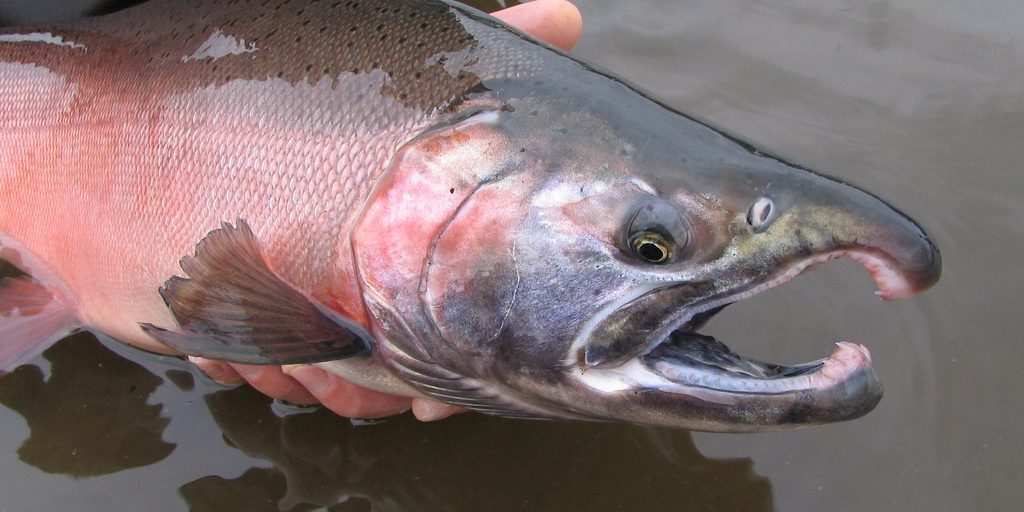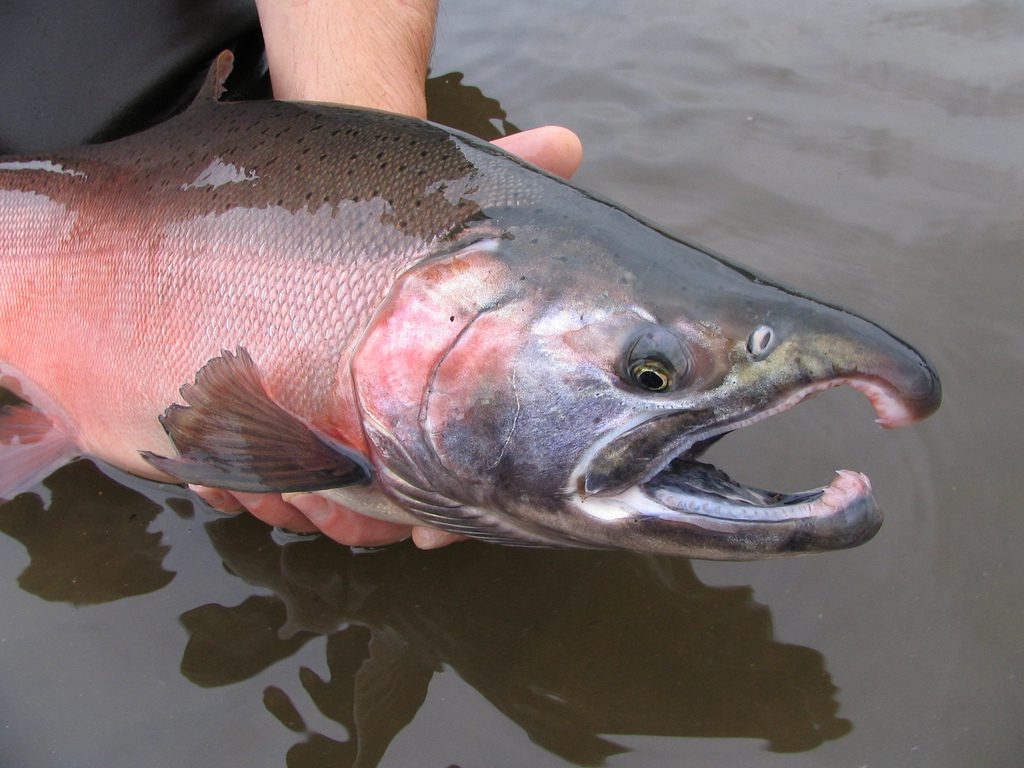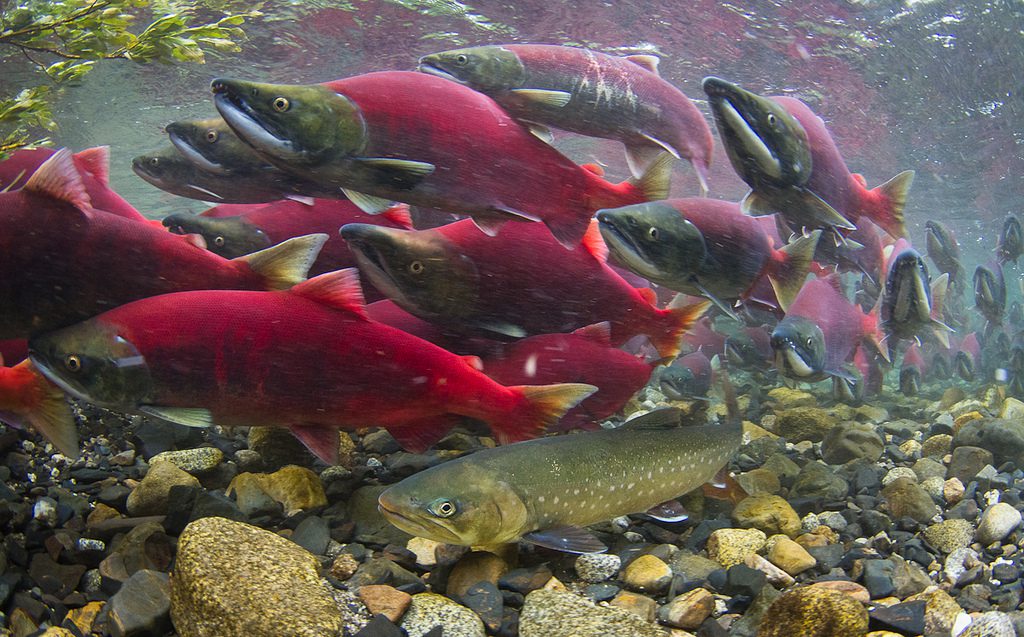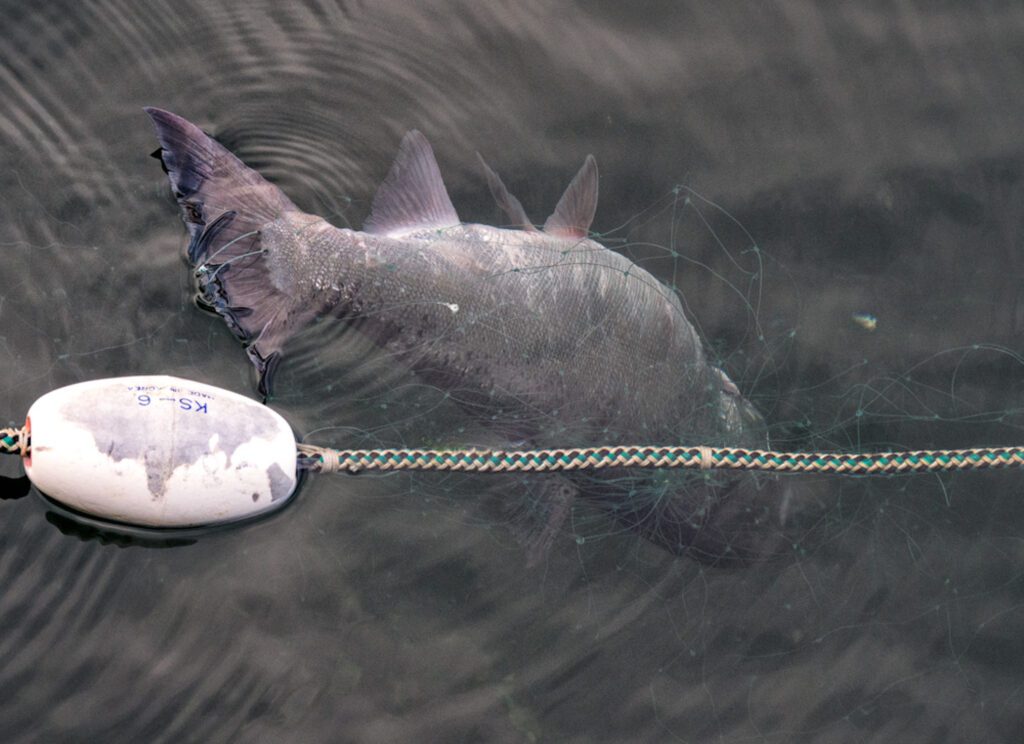Chinook and chum salmon are already swimming up the Yukon River, but as subsistence fishermen and state fishery managers anticipate the worst run on record, tight fishing restrictions designed to protect Chinooks have some subsistence fishermen saying they can’t catch anything at all.
“We do not want to be handling Chinook salmon unnecessarily when we have such a low run,” said Alaska Department of Fish and Game biologist Eric Newland during the first in-season management teleconference Tuesday. The call, organized by the non-profit Yukon River Drainage Fisheries Association, brings subsistence users from all along the river together for a weekly discussion with each another and management officials.
As of 8 p.m. Monday, May 26, the Northern Coastal District and Districts 1-3—from the mouth of the Yukon to just north of Holy Cross—are closed to gillnets with mesh sizes bigger than 4 inches. Dipnets are also prohibited, for now. Newland and other fishery biologists say the restrictions are in place to avoid Chinook bycatch.
“We’re concerned for the Chinook run, and we have some pretty big closures on subsistence,” Newland said. “We don’t want to kill any more kings than we need to.”
But many fishermen say the restrictions are keeping them from catching the summer chums that are also in the river. In short, subsistence users say they’re willing to back off the kings, as long as they can get their chums.
“We got restrictions so early this year,” said a Russian Mission caller who identified himself as Ryan.
“[District] Y1 had about a week to get some salmon, and here at Russian Mission, we haven’t got any salmon. Maybe I heard one chum salmon,” he added.
Ryan also said subsistence users further along the river also “didn’t get a chance to get our sheefish” before regulations went into effect.
Others along the Yukon echoed Kenai fisherman Robert Gibson, who disagreed with fishery managers as to how much of a threat dipnetting poses to Chinook.
“I personally dipnet in the Russian River here [near Kenai] for years, and I hardly see any damage or mortality [to Chinook] at all when doing so. So, I would like to know what your concerns are not allowing dipnetting for chums for subsistence during the closure?”
Newland and other fishery managers said they don’t have “quantifiable” data backing their dipnet restrictions, but are erring on the side of caution when it comes to protecting Chinook. They added that restrictions will likely be lifted when more chum are seen in the river, or if there’s a break in the Chinook run.
Another caller, Eric from St. Mary’s, said the new restrictions mean many subsistence users now find themselves without the right equipment.
“We’ve got probably 75 percent of these subsistence users who don’t have the gear to harvest right now,” he said. “It’s only a handful of the people who tried it last year in the commercial. So I don’t know how we’re going to deal with … getting their subsistence needs met.”
Despite complaints, the restrictions and salmon closures remain in effect from the coast through District 3, with similar restrictions coming to other districts as the first Chinook build up to a pulse and begin making their way upriver.







